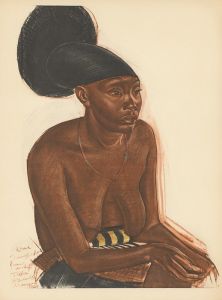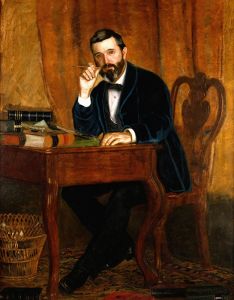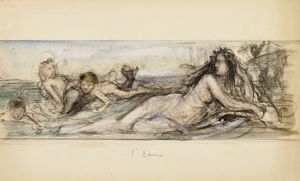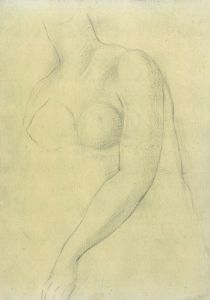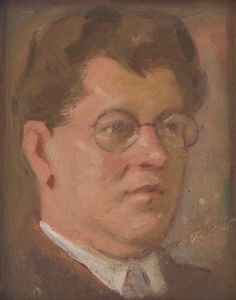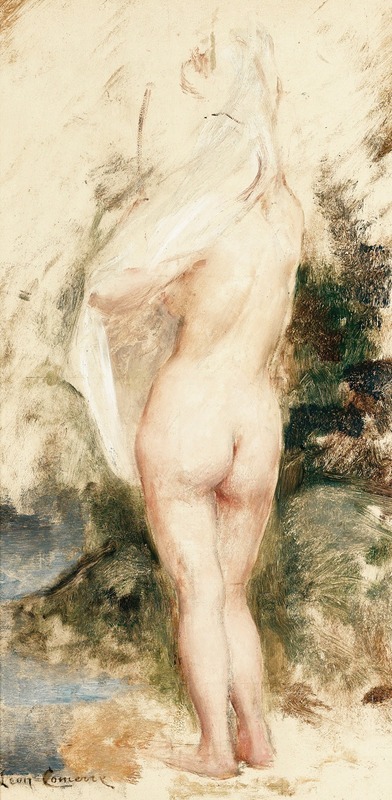
Study of a Nude Woman
A hand-painted replica of Léon François Comerre’s masterpiece Study of a Nude Woman, meticulously crafted by professional artists to capture the true essence of the original. Each piece is created with museum-quality canvas and rare mineral pigments, carefully painted by experienced artists with delicate brushstrokes and rich, layered colors to perfectly recreate the texture of the original artwork. Unlike machine-printed reproductions, this hand-painted version brings the painting to life, infused with the artist’s emotions and skill in every stroke. Whether for personal collection or home decoration, it instantly elevates the artistic atmosphere of any space.
Léon François Comerre was a French academic painter known for his portraits, Orientalist works, and depictions of women. Born on October 10, 1850, in Trélon, France, Comerre was a prominent figure in the late 19th and early 20th centuries. He studied at the École des Beaux-Arts in Lille and later at the École des Beaux-Arts in Paris, where he was a student of Alexandre Cabanel, a leading academic painter of the time.
Comerre's work is characterized by its attention to detail, vibrant use of color, and a focus on the human form, particularly the female figure. His paintings often reflect the academic style of the period, which emphasized technical skill and adherence to classical standards of beauty and composition.
"Study of a Nude Woman" is one of Comerre's works that exemplifies his skill in portraying the human body with grace and realism. While specific details about this particular painting are scarce, it is consistent with Comerre's broader oeuvre, which frequently explored themes of beauty, femininity, and the exotic.
In "Study of a Nude Woman," Comerre likely employed his characteristic use of light and shadow to highlight the contours and textures of the subject's skin, creating a sense of depth and realism. His academic training would have informed his approach to anatomy, ensuring that the proportions and posture of the figure were rendered with precision.
Comerre's paintings often feature rich, warm color palettes, and he was known for his ability to capture the subtleties of skin tones. This attention to color and detail would have been evident in "Study of a Nude Woman," contributing to the lifelike quality of the work.
Throughout his career, Comerre received numerous accolades for his art. He was awarded the Prix de Rome in 1875, which allowed him to study in Italy, further refining his skills and expanding his artistic influences. His works were regularly exhibited at the Paris Salon, and he gained recognition both in France and internationally.
Comerre's focus on the female form can be seen as part of a broader trend in 19th-century art, where the depiction of women, often in idealized or exotic contexts, was a popular subject. This interest was partly fueled by the Orientalist movement, which romanticized and depicted the cultures of the Middle East and North Africa through a Western lens.
While "Study of a Nude Woman" may not be as widely known as some of Comerre's other works, it remains a testament to his skill as a painter and his ability to capture the beauty and complexity of the human form. Comerre continued to paint and exhibit his work until his death on February 20, 1916, leaving behind a legacy of art that continues to be appreciated for its technical mastery and aesthetic appeal.





